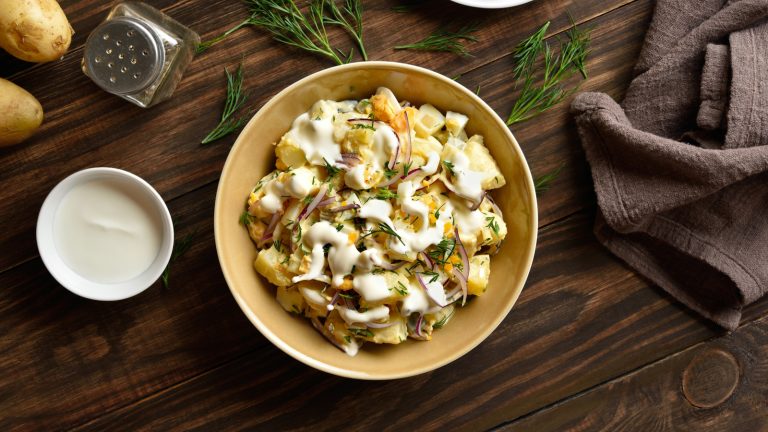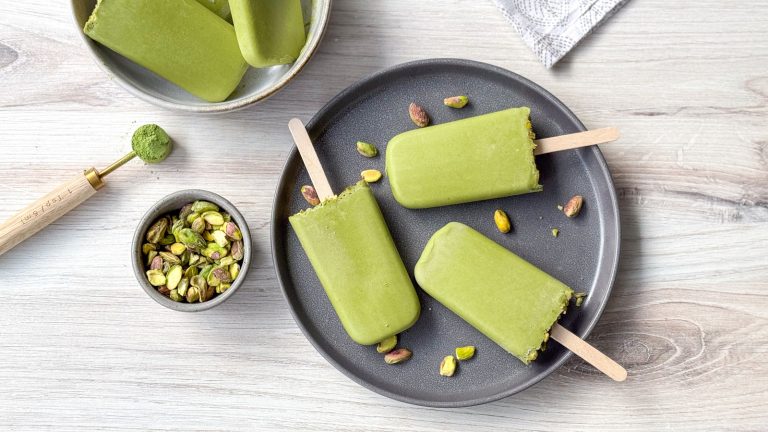Tomatoes are a popular choice for home gardeners and for good reason. They are easy to grow from seed, grow quickly, and produce delicious food. As someone who runs my own gardening business and grows tomatoes every year, I’ve experienced the highs and lows of growing tomatoes. On their own, they will often grow beautifully, especially indeterminate tomatoes, which can grow exceptionally tall. However, when you try to plant things next to them, problems can arise.
It’s hard to kill a tomato plant when growing, but they are quite demanding. They need as much sun as you can possibly give them, along with intense watering. Added to that, their soil needs plenty of nutrients and the plant requires a lot of airflow. There are many plants that can either interrupt one of those needs or make the plant more susceptible to pests or disease. At best, this can lead to stunted growth. At worst, this can lead to the death of your tomato plant. That’s where I can help. With my expertise, I’ll guide you through 15 plants that should never be planted with tomatoes. Along with these plants, I’ll arm you with all the knowledge you need on why certain plants don’t work well together.
Brassicas
The brassica family includes many popular vegetables such as cabbage, broccoli, cauliflower, and kale. As a new gardener, it’s easy to presume that any plant will want as much sun as possible. Instead, there are many that prefer some partial shade, including brassicas. In contrast, you want to plant tomatoes in the sunniest spot in your garden. When in a shaded spot, brassicas will continue to produce tasty leaves. If they get too much sun and heat, they can bolt. This is where the plant will suddenly go to seed, often rapidly growing upwards. Here, the plant puts all of its energy into reproducing, and its leaves go bitter.
That’s not the only problem here either. Brassicas are heavy feeders and require a lot of nutrients to thrive. With tomatoes being the same, there will be a lot of competition for water and resources. This can lead to stunted growth for both plants. It’s best to grow brassicas at the opposite end of your garden, with tomatoes on the sunniest side, and brassicas in a shaded spot. The same applies to leafy vegetables such as lettuce and spinach. These can bolt too and have the same nutrient needs as brassicas, so they should always be planted away from tomatoes.
Sunflowers
I love planting sunflowers. They can grow to majestic heights with heads that shine more beautifully than any other flower. They are also more edible than many people think. However, I quickly learned they have a dark secret when I placed plants next to them, including tomatoes. Sunflowers are allelopathic. This means they release chemicals that can inhibit the growth of nearby plants. This is a natural chemical released through their roots, but can also come from decaying plant matter such as leaves and petals. This will stunt your tomato growth and reduce yields. While tomato plants grow quickly, they don’t quite match the speed of the sunflower. It means the latter will begin to dominate. Your tomato plant won’t get as high as it could, and the tomatoes won’t reach their true potential size.
There are other reasons these should be kept apart. With tomatoes needing full sun, the immense size of sunflowers can give them too much shade and overshadow other plants. When planting sunflowers, it’s always worth considering how their shadows will affect other plants. Both of these plants are also incredibly thirsty. In a hot spell, they’ll need watering multiple times a day, and the tomato plant may suffer and start to wilt. In my experience, tomato plants need even more water than sunflowers, so trying to share this crucial resource doesn’t work for them.
Mint
Anyone who has planted mint before will immediately know why this would be a bad idea. Not only should you not plant mint near tomatoes, but you shouldn’t plant mint in the ground at all. Mint has an invasive growth habit and grows fast. It spreads aggressively and once it does, it’s hard to control. The way it does this is by spreading runners, called rhizomes. These creep under the ground, and then new plants will pop up out of the ground. This means they can quickly take over a garden bed or wherever you have planted them. The solution is often to completely dig them up, along with anything else that may be planted around them. It may provide recipes with a refreshing cool flavor, but as a plant, it can quickly make gardeners hot and bothered.
This invasive growth can not only be hard to control, but it will start to crowd out your tomato plants and outcompete them for resources. Mint should always be grown in a pot if you want full control of it. While planting is a no-no, placing a pot of mint next to your tomatoes can actually be a good idea. Mint can attract pollinators, which are crucial in helping tomato plants to pollinate. However, mint does grow best in partial shade, so you do have to take this into account.
Root vegetables
Growing root vegetables can be a lot of fun. The likes of carrots, potatoes, and beets are quite easy to grow, and you get huge satisfaction from tasting your own produce. If you aren’t aware, they are called root vegetables as the main part of the crop is the root that grows underground. This means that to harvest the crops, you need to either dig or pull them up. Despite being able to grow quite tall, tomatoes don’t have a deep root system. This means that root vegetables can disrupt the tomato’s roots, either as they grow and push the soil underground or when they are harvested.
This can negatively affect the nutrient uptake of the tomato, leading to slower growth. Instead of disturbing the soil, it’s best to grow any root vegetables you want together. It’s tempting to grow plants that you harvest above ground near root vegetables as it looks as though you have the space to do it. However, you have to appreciate what goes on below ground and the root needs of each plant.
Nightshade vegetables
Nightshade is a collective name for a large group of flowering plants. These include potatoes, peppers, and eggplants. Interestingly, another member of this group is tomatoes. It’s because they are so similar that they should be kept apart. Being part of the same family, they are all prone to the same diseases and pests. Any problem you have can spread rapidly between plants and increase the risk of full drop failure. This can be mitigated through pesticides and constant monitoring, but for many, it’s not a risk worth taking. Another potential issue with nightshades is that they require a high level of nutrition and moisture.
Growing them together can lead to depleted soil and subsequent smaller harvests. Again, this can be mitigated by frequent watering and fertilizing, but this is high-maintenance gardening that could otherwise be avoided. This can be tricky, as most nightshades need full sun and therefore would thrive in the sunniest spot in the garden. Using pots and grow bags can be a good way to keep them close together while mitigating any potential disease spread.
Fennel
Fennel can be a flavorful addition to your recipes, but it has many of the same issues that sunflowers have when it comes to planting. Both of them release allelopathic chemicals into the soil that can inhibit the growth of any neighboring plants. Some plants cope better than others in these situations, but tomatoes can be particularly sensitive. This can often cause the yellowing of leaves along with stunted growth and poor fruit production.
There is an additional issue that fennel can bring as well. Fennel has a strong smell and can attract a wide range of beneficial insects. Sadly, it can also attract plenty of pests along with it. The main problems here will be aphids and cutworms, which can both damage your tomato plant in various ways. Tomatoes are quite susceptible to a wide range of pests. Due to this, you don’t want to increase their already high chances of getting a problem.
Dill
Dill is an interesting plant as it can start life as quite helpful to a tomato plant. This is because it can work to repel certain pests such as aphids and hornworms. The trouble comes when it matures. This is another that will release compounds that can inhibit the growth of nearby plants, with tomatoes being one of the most susceptible. This will interfere with the development of the tomato plant, meaning it won’t grow as well as it could, and the tomatoes won’t reach their true potential. Another issue comes from the size that dill can grow to.
It can become quite tall and bushy, potentially reducing the amount of sunlight the tomato plant receives. As we’ve mentioned, tomatoes benefit from as much sunlight as they can possibly get. If you want to grow dill, then a great idea is to grow it in containers and keep it next to tomato plants while they are young. You can then move them to another location in the garden before the plant starts to flower.
Beans
Beans have an interesting relationship with tomatoes. It can actually be a good idea to plant tomatoes in an area where beans were once grown. The reason is that beans can fix nitrogen into the soil, which is a vital resource for tomatoes. While they may be friendly underground, it’s what happens above the soil that can be an issue. Beans, especially pole beans, can crowd each other out as they compete for both space and airflow. If planted too close, they can tangle together and quickly overcrowd a garden bed. When this happens, other issues can arise.
The reduction in airflow creates a perfect environment for fungal diseases such as blight and powdery mildew to thrive. It’s tempting to plant them together as both pole beans and indeterminate tomatoes need trellises or supports. However, their vines can become a tangled mess, which makes managing the plants much more difficult. Bush beans won’t have quite the same issue, but can still reduce tomato plants’ access to nutrients and water.
Corn
You may be tempted to grow corn for many of the same reasons you grow tomatoes. They are tall and fast-growing plants that can look super impressive in your garden. As with tomatoes, corn is also a versatile crop that can be used in many different ways. It’s the tall growth of corn that can cause issues. Depending on the variety, it’s likely the corn will grow taller than your tomatoes and will therefore cause a significant amount of shade.
When planted side-by-side, it’s easy to leave both plants undernourished. You’d need to use a significant amount of fertilizer to keep up with the same nutrient needs for both plants. There is also a pest called either the corn earworm or the tomato fruit worm. This pest can be a nightmare and easily spread from one type of plant to the other. Unless caught quickly, an infestation can be very hard to control.
Black walnut trees
This one is a little niche, as not everyone is going to have a black walnut tree in their garden. However, these trees are a serious no-go for planting near tomatoes. In fact, planting near these trees isn’t a good idea in general. That’s because these trees naturally produce a chemical called juglone, which is toxic to many plants. This chemical is released through all parts of the tree, with even its leaves being responsible for releasing this plant toxin. The result of this chemical is that it will interfere with a tomato’s ability to take up water and nutrients.
The first signs of this will be wilting and yellowing leaves. At worst, it can lead to plant death. As well as juglone, there is the more obvious point that the shade and extensive root system of a tree will create a tough environment for any nutrient-hungry plant. If you do have a black walnut tree on your property, then it may be best to consider either removing it or planting any crops you want in a raised garden bed.
Nasturtiums
Nasturtiums are an interesting one when it comes to tomatoes. They can be good for them in some sense, but bad in others. The reason they can be good is that they are known as a trap crop. These are plants that attract a wide range of pests. The idea is that you plant these near your crops and they will divert the problem pests away from the plants you most care about. There can be an issue with this if you plant your nasturtiums too close to your tomatoes. If too close, they can transfer some of those pests straight into your valuable plants.
Added to this, nasturtiums spread quite quickly and can become bushy. When planted next to a tomato plant, this can block the light and air that it needs to thrive. Therefore, nasturtiums can help with healthy tomato plants, but only if they are grown near but not next to them. You’ll also get the added benefit of a beautiful plant along with your healthy crops. At a comfortable distance, both will thrive.
Strong Mediterranean herbs
Strong Mediterranean herbs include popular plants such as rosemary, thyme, oregano, and sage. The problem here comes from them having completely different needs for tomatoes. These types of herbs don’t require much moisture at all and only need occasional watering. Due to this need, they also need well-draining soil that doesn’t retain much moisture. There is a soil difference, too, as herbs are perfectly fine in less fertile soil. This contrasts with the nutrient-rich soil requirements you need for healthy tomatoes.
Some other types of herbs can be beneficial for tomatoes, especially basil, which has similar soil requirements and can be used in a huge number of recipes. Herbs are also quite likely to deter pests that can attack a tomato plant, especially hornworms. As with a few of these plants, they work perfectly fine together if one of them is kept in a pot. If they are, you can meet their individual needs without worrying about how they’ll interact.
Strawberries
It can be tempting to grow these two side by side. They require the same nutrients and water, meaning you can use the same plant food for them, and you don’t have to worry about differences in moisture needs. But those similarities can be an issue. They will compete for resources, and unless you keep on top of it, they can stunt each other’s growth. Another similarity is their vulnerability to the same diseases, especially verticillium wilt. If one plant gets this disease, then it can spread easily. Given that it can survive in the soil even after the plant dies, this can be a major headache.
Thankfully, there is an easy solution here. While tomato plants would need a very large pot to thrive, strawberries are happy in a much smaller container. If you pot your strawberries and keep them close by, there won’t be an issue. Strawberries also prefer slightly more acidic soil than tomatoes, so potting them allows you to more easily match their specific growth needs and use them in some delicious desserts.
Cucurbits
Cucurbit is a family of plants that includes cucumbers, squash, pumpkins, and melons. It’s rarely a good idea to plant anything near them due to how demanding they are of both space and nutrients. Firstly, they are heavy feeders and will demand a high level of the same nutrients tomatoes need, namely nitrogen and potassium. This can mean that keeping the soil fertile enough for high yields for both crops can be challenging. In terms of space, cucurbits grow sprawling vines to capture the light they need. These vines can overcrowd and overshadow tomato plants, limiting their access to air and sunlight.
This crowding also leads to a high level of humidity, which in turn leads to a higher chance of fungal diseases. These diseases can quickly spread through both crops and become hard to manage. Due to these high demands, cucurbits are best grown in their own separate area or garden beds. However, due to the space they take up, I prefer to simply plant other crops instead.
Drought-tolerant plants
This is quite an obvious one. As a beginner, it can be easy to assume that plants can’t get enough water. The reality is that each plant has its own watering requirements. If a plant doesn’t need a lot of water, the soil will stay moist and stagnant. For the flower, this can lead to an array of issues such as yellowing leaves and rotting roots. For drought-tolerant plants such as succulents, it can also lead to mushy leaves and those leaves dropping off.
As we’ve mentioned, tomatoes are on the other end of the spectrum. It’s possible, but it’s hard to overwater tomatoes. As soon as their soil gets too dry, their leaves will start to wilt. It’s this complete mismatch that means they shouldn’t be planted together. Along with succulents, you want to check if any plant you buy is vulnerable to overwatering. As always, before planting anything, assess the growth needs and compare them with what will be planted around it.





